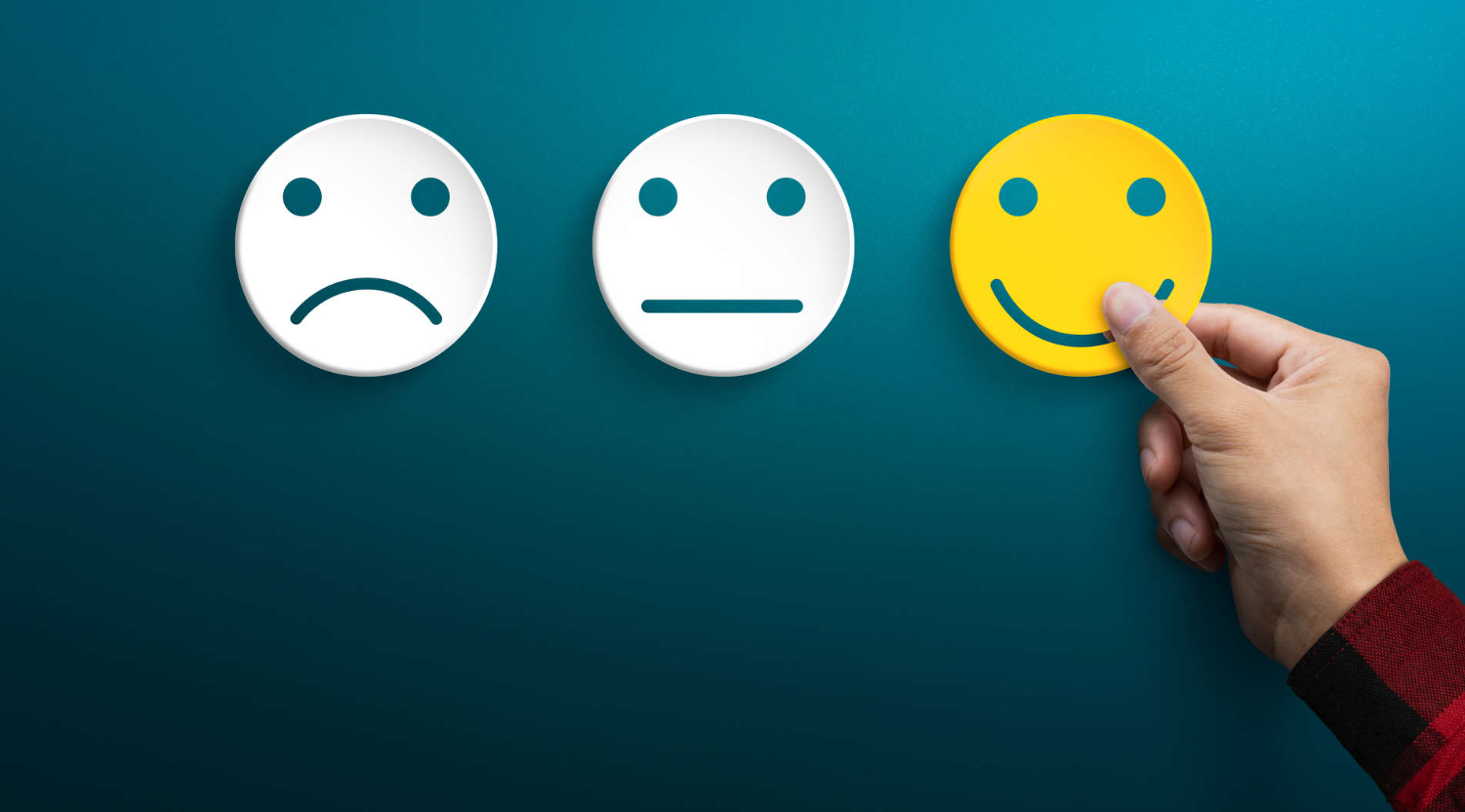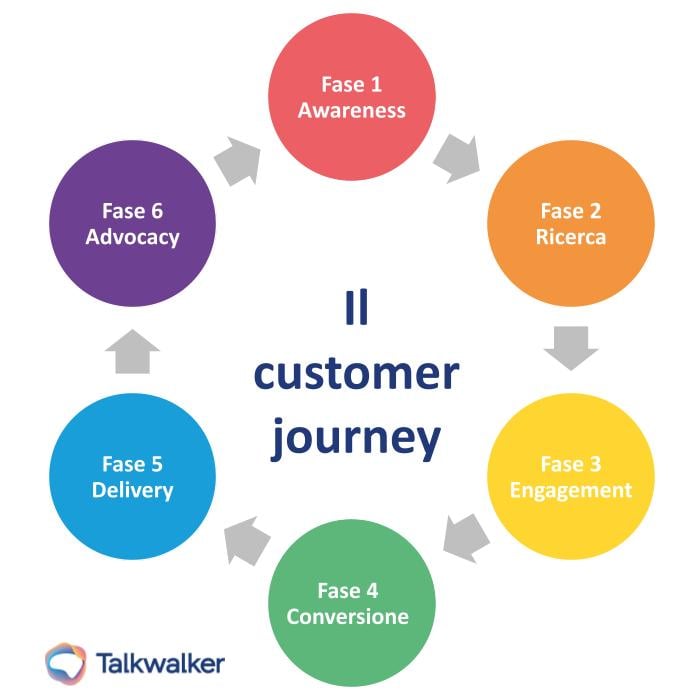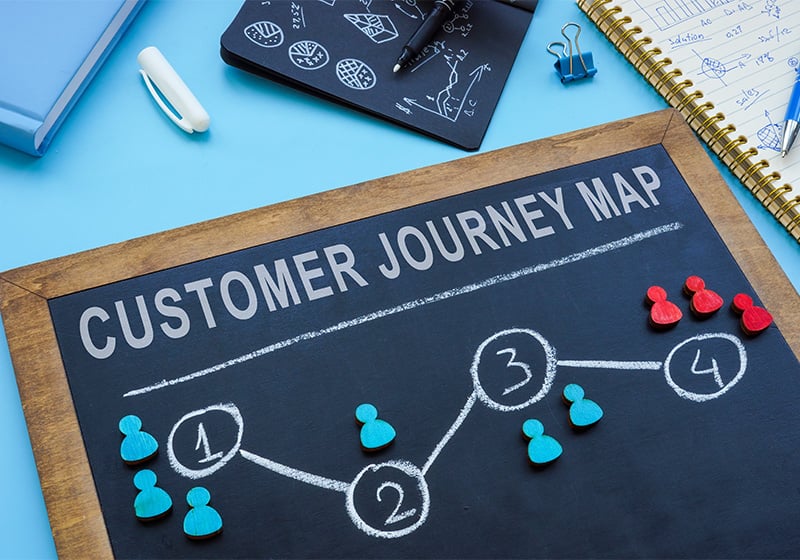Table of Contents
Mapping the customer journey: everything you need to know
The goal of every business is to have happy customers.
This happiness is closely tied to the satisfaction customers feel in searching for, purchasing and using a product or service.
These days, people interact with companies through myriad touchpoints across a range of different channels and media, yet their experiences remain (and are increasingly) social in nature. This means that customer happiness is felt at an emotional level that needs to be properly understood:
- What can cause frustration along the customer journey?
- What makes customers happy?
- How can brands positively influence this experience?
To answer these questions, we first need to define the customer journey:
The sequence of steps that people take as they approach our business – from the emergence of need to the after-sales phase (and, potentially, repeat purchase).

Although we’ve covered this topic before on this blog, we’re going to take a deeper dive today. And the reason why is nicely summed up in this article from TalkWalker:
The consumer journey used to be simple. An ad – TV, billboard, newspaper, radio – would pique your interest. Ooh, I need that product. Some research, then off to the store to buy. Now? It’s a journey made up of multiple journeys. Offline. Online. Social media. Websites. Apps. Mobile. Desktop. How to measure the consumer journey that takes such a snaking route?
So here’s everything you need to know about the customer journey, once and for all 😉
From touchpoints to the customer journey
When it comes to your business, you can think of the customer journey as a series of touchpoints through which customers interact with your brand.
Consumers meets a touchpoint when they…
- Click on an ad
- Find a website through organic search
- View one or more web pages
- Click on links from other sites
- Start a chat to speak with a company
- Download content on a landing page
- Watch a video tutorial
- Read blog articles
- Receive an email for an inbound marketing campaign
- Interact by email or phone with the sales team
- Signs up for a free product demo
However, we need to take a step back and focus on customer experience, which 80% of people believe to be as important as the product itself (according to a study by Salesforce). Indeed, touchpoints can be misleading and paint a picture that does not match reality: they only mean something when viewed from the perspective of customer experience.
Where should you start mapping the customer journey?
The customer journey map is a visual representation of customers’ experience in interacting with your brand.
Mapping the customer journey allows you to understand the needs and pain points that drive or inhibit people’s actions. This information can then be used to improve the customer experience, and with it conversion rates and customer loyalty.
Given the fluid and complex nature of customer journeys today, mapping them is not always straightforward. You can use sticky notes or a whiteboard – better still if digital, such as the collaboration and visual thinking tools Miro – to record the journey, but a good place to start is this resource from HubSpot, which provides various templates to guide through the mapping process.
But before you start, you need to collect data on customers and prospects so that the map you draw is as accurate as possible. Sources of useful information include:
- Customer reviews and surveys, offline or online, perhaps providing an incentive for participation (e.g. a discount voucher).
- Industry studies and reports (you don’t necessarily have to buy these! For example, global consulting firm McKinsey has a well-made and compelling mobile app that’s rich in content and reports that might provide you with useful data and insights. It’s called McKinsey Insights!).
- Monitoring your company website and looking at web analytics, especially if you have an e-commerce operation or a blog.
- Monitoring your brand’s social media, focusing on customer behaviour and perhaps using useful, reasonably priced tools such as Brand Mentions, Brand24, and Not Just Analytics)
- Customer service data, for example, by looking at your customer relationship management (CRM) system or conducting an internal audit into customer support and/or sales management.
Creating your customer journey map
There is no such thing as a universal map that reflects all customer segments and their journeys. So you don’t need to include every process in one big, confusing map.
It’s much more sensible to consider customer objectives individually, such as a product purchase, creating different maps for each customer segment or buyer persona.
So let’s look at how to draw a customer journey map by dividing the process into four steps:
- Set an objective: When you start making a map, you need a clear idea of why you are creating it.
- What objectives guide this phase?
- Who does the map refer to and on what experiences is it based?
- Create buyer personas: Focus on a limited number of customers who share the same behaviour and profile. Define their needs and how they relate to your brand. If this is the first time that you’ve created a customer journey map, start with the buyer persona most common to your company. Don’t worry about the people you’re leaving out: first focus on those you know best.
- Make a list of every touchpoint: Using the information you’ve collected, note down every opportunity for interaction between the company and the customer. This is a key phase that can reveal fruitful areas for analysis straight away. For example:
- If customers use fewer touchpoints than expected, does this mean that they stop engaging with the brand or abandon the site sooner?
- If they use more than expected, does this mean that the site is complicated and requires too many steps to reach the end of the journey?
A useful tip for finding third-party touchpoints is to do a Google search for the company, brand and/or related products to see what customers find. Paid ads, reviews and article mentions might give an initial push to the customer to start their journey.
- Always verify their effectiveness by cross-checking data: Once you have created your list and marked your touchpoints on the map, it’s time to test the journey. Initially, it might be worth checking the map internally using employees. But the behaviour of real clients will be the true test of its actual effectiveness.
How we can influence the customer journey
The factor most able to influence the customer – or nudge them in one direction rather than another – in the purchase process is… the brand itself.
A strong brand identity that is well-defined and recognisable will make it easier for customers to purchase products or services because high brand awareness will ensure trust and effective positioning.
And that’s not all: the more a customer trusts a brand and company, thanks to its reputation, the more likely they will be to skip some of the touchpoints on our map, thus accelerating their customer journey 🙂
The second way to influence the customer journey is to improve the experience, which is why we’ve created this map. Often, a successful purchase experience comes down to simplification. A survey conducted by Siegel + Gale into over 15,000 consumers in nine countries for the World’s Simplest Brands study revealed that the brands perceived as having the simplest and most seamless experience boasted the best stock performance and most loyal customers. Although not easy to achieve, this perception is essential for creating the smooth and intuitive experience that your audience craves…


